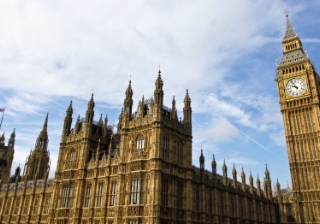Housing market remains robust despite dip in prices: Halifax
House prices have fallen by 0.4% in May, as the market adjusts after April’s stamp duty deadline.

House prices fell by 0.4% in May, compared with a rise of 0.3% in April, but the market remains steady, according to the latest Halifax house price index.
The annual rate of growth slowed to 2.5%, from 3.2% in April, but overall house prices have remained stable so far this year.
The data also shows that house price growth across Northern Ireland, Wales and Scotland continues to outpace English regions.
Northern Ireland once again recorded the fastest pace of annual property price inflation, up by 8.6% over the past year. The typical home now costs £209,388, though prices remain well below the UK average.
Wales and Scotland also posted strong annual growth of 4.8% in May. Average prices now stand at £230,405 and £214,864 respectively.
Among the English regions, the North West and Yorkshire and the Humber lead the way, both showing annual house price growth of 3.7%. Average property values in these areas are now £240,823 and £213,983 respectively.
In contrast, London continues to see more subdued growth, with prices rising by just 1.2% year-on-year. However, the capital remains by far the most expensive part of the UK housing market, with the average home now priced at £542,017.
Amanda Bryden, head of mortgages at Halifax, said: “Average UK house prices fell by 0.4% in May – a drop of around £1,150 – following a modest rise in April. Over the past 12 months, prices have grown by 2.5%, adding just over £7,000 to the value of a typical home, which now stands at £296,648.
“These small monthly movements point to a housing market that has remained largely stable, with average prices down by just 0.2% since the start of the year. The market appears to have absorbed the temporary surge in activity over spring, which was driven by the changes to stamp duty.
“Affordability remains a challenge, with house prices still high relative to incomes. However, lower mortgage rates and steady wage growth have helped support buyer confidence.
“The outlook will depend on the pace of cuts to interest rates, as well as the strength of future income growth and broader inflation trends. Despite ongoing pressure on household finances and a still-uncertain economic backdrop, the housing market has shown resilience – a story we expect to continue in the months ahead.”
Holly Tomlinson, financial planner at Quilter, commented: “Following the end of the temporary stamp duty thresholds in April, the housing market saw a clear shift in momentum. Buyers rushed to complete transactions in March to avoid higher tax bills, but activity cooled noticeably in April, as shown by the Bank of England’s latest mortgage approval figures. Despite this drop in demand, house prices have not fallen off a cliff.
“The fact that prices fell only modestly in May indicates that supply remains constrained and sellers have not yet been forced to adjust their expectations. However, with affordability still stretched and borrowing costs relatively high, the risk of a more prolonged slowdown cannot be ignored.
“Mortgage rates are edging down slightly , but for many buyers, this remains a far cry from the ultra-low rates of recent years. For those coming to the end of a fixed deal, the jump in monthly repayments can be significant, adding to the financial strain.
“Looking ahead, market confidence will likely hinge on the timing and pace of interest rate cuts. A more meaningful pick-up in buyer demand may not materialise until there is clearer evidence that mortgage costs are on a sustained downward path. For now, the market appears to be pausing for breath after a frenetic start to the year."
Jonathan Handford, managing director at national estate agent group Fine & Country, added: "House prices saw a modest decline in May, reflecting the market’s ongoing adjustment after a transitional start to the year.
"This slight month-on-month dip follows the stamp duty changes introduced in April and comes just ahead of the typically quieter summer period, when many families pause moving plans to focus on holidays and school breaks.
"Although economic pressures continue to impact personal finances, with inflation at 3.5% and household budgets feeling the squeeze, the Bank of England’s May rate cut to 4.25% has offered some welcome relief. While mortgage rates remain relatively high, any further easing in borrowing costs could help reignite market activity.
"Mortgage approvals fell in April as demand naturally cooled after the stamp duty tax break ended, and tighter lending criteria and deposit requirements still pose challenges for many buyers, particularly first-time purchasers. However, steady wage growth is providing some support, even if affordability remains a hurdle.
"Regional variations continue to shape the market landscape. While some areas have seen sharper price adjustments, others are stabilising or experiencing more gradual declines - creating promising opportunities for buyers ready to take action.
"Overall, May’s price movement highlights ongoing headwinds but also points toward potential for recovery. The recent flurry of transactions would have been welcomed by sellers and a quieter period was always to be expected.
"A sustained upturn will rely on broader economic improvements and targeted efforts to enhance affordability, fostering a healthier and more balanced housing market in the months ahead."

Breaking news
Direct to your inbox:
More
stories
you'll love:
This week's biggest stories:
Budget
Budget: Government introduces mansion tax on high-value homes

Budget
Budget: Government introduces £2,000 salary sacrifice cap

Lifetime Isa
Budget: Lifetime ISA to be scrapped in favour of new first-time buyer ISA

Budget
Budget: Property income tax to rise by 2%

FCA
Firms required to report complaints involving vulnerable customers under simplified FCA rules

Santander
Santander joins mortgage price war with new rates from 3.51%
